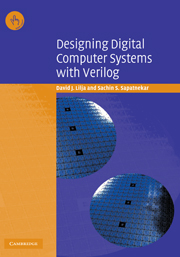We have been concerned with the design of switching circuits constructed of electronic gates or bilateral devices. There exists another type of switching device called a threshold element. With the advent of novel nanotechnologies, threshold elements are attracting attention once again since they form the basic logic primitives in some of these technologies.
Circuits constructed of threshold elements usually consist of fewer components and simpler interconnections than the corresponding circuits implemented with conventional gates. However, while the input–output relations of circuits constructed with conventional gates can be specified by switching algebra, different algebraic means must be developed for threshold circuits. In this chapter, we shall study the properties of threshold elements and present necessary and sufficient conditions for a switching function to be realizable by just a single element. We shall then present a general synthesis procedure for synthesizing switching circuits using only threshold elements. Finally, we shall discuss synthesis methods based on majority or minority logic gates, which are simple threshold elements.
Introductory concepts
The usefulness of threshold logic, or any other new logic in digital system design, is determined by the availability, cost, and capabilities of the basic building blocks, as well as by the existence of effective synthesis procedures. In this section, we shall study the properties of the threshold element, and discuss its limitations and capabilities.
The threshold element
A threshold element, or gate, has n two-valued inputs x1, x2, …, xn and a single two-valued output y.
